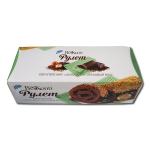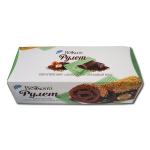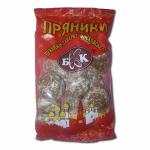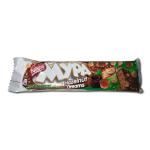
Other names for the additive (synonyms)
General Information
The food colorant E150d (Caramel Colour IV) belongs to the group of additives E150 (Caramel Colour). This additive is resistant to high acidity, light exposure, and temperature fluctuations. It is suitable for products that are subjected to high heat and pressure during processing and have high acidity. Additive E150d dissolves well in water and shows high microbiological stability. It helps prevent the growth of harmful microorganisms in the final product.
The food colorant E150d also helps prevent sediment formation in products — this is due to the molecules of the additive having either a positive or negative residual charge, depending on the reagents used during production.
Like all types in the E150 group, the E150d colorant is produced by heat treatment of carbohydrates such as glucose or sucrose. Its main difference lies in the addition of ammonium and sulfite compounds (alkalis and acids) to the reaction mixture. For the production of additive E150d, the following substances may be used: ammonium phosphate, ammonium hydroxide, sulfuric acid, ammonium sulfate, ammonium sulfite and bisulfite, sodium sulfite and bisulfite, potassium sulfite and bisulfite, ammonium carbonate and bicarbonate.
Key characteristics of additive E150d:
- Colour – dark brown, almost black (the darkest in the group);
- Odour – burnt sugar;
- Form – powder or liquid;
- Taste – bitter.
Effects on the Body
Benefits of additive E150d
The E150 group of additives is generally considered safe when consumed within acceptable daily intake levels.
Risks of additive E150d
Additive E150d is considered the most hazardous among the E150 class. According to some studies, it has weak carcinogenic effects and may contribute to the development of cancer and gastrointestinal issues. However, according to the FAO/WHO Expert Committee, this colorant is considered safe if its daily intake does not exceed 200 mg per kilogram of body weight.
In a scientific opinion by the EFSA Panel on Food Additives, the E150d colorant was deemed safe for use in food products.
Uses
The food additive E150d is most commonly used to colour beverages (both alcoholic and non-alcoholic). It is also used to give various caramel, brown, or beige shades to:
- confectionery – biscuits, cakes, gingerbread;
- bakery products;
- frozen desserts;
- alcoholic beverages – wine, cider, whisky, cognac, liqueurs, bitters, beer;
- meat delicacies and sausages, pâtés, cooked meat, sausages and frankfurters;
- ready meals;
- canned vegetables;
- marinades and sauces;
- pickles;
- jams and preserves;
- fruit compotes;
- citrus marmalades;
- canned mushrooms;
- dry soup mixes;
- chocolate spreads;
- dairy desserts;
- vinegar.
Legal Status
The food additive E150d is not banned for use in the food industry. However, in some countries (including the United States), manufacturers are required to indicate its presence on product labels. This colorant is permitted for use in food production in Ukraine, EU countries, and the United States.
For more detailed information about the benefits and risks of additive E150d, see the main page of the E150 additive group.



